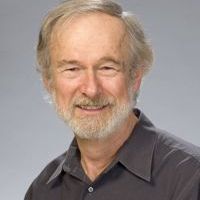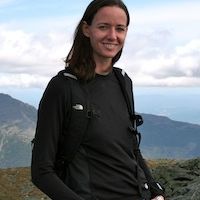4. Saprolite to Sea Integration of Erosion-Driven Caron Sequestration
Q4.1 How are erosion-deposition processes linked to alteration of net CO2 fluxes between land and atmosphere?
-
A series of reports and letters in Science (Van Oost et al. 2007, Harden et al. 2008, Lal et al. 2008) has highlighted a continuing debate on whether anthropogenic erosion might result in a globally significant carbon sink (Stallard 1998, Smith et al. 2001) or represents an important net carbon dioxide source (Lal 2003). Resolving this debate is of considerable interest because despite more than a decade of research, the search continues for processes responsible for the “Missing Sink” of ~2-4 Pg C y-1 of the 1990’s (IPCC: Solomon et al. 2007), which atmospheric CO2 models suggest is equally divided between temperate and tropical land masses (Stephens et al. 2007).
Previous studies have explicitly considered one or more of three mechanisms linking erosion- deposition processes to alterations of net CO2 fluxes between land and atmosphere:
- M1. Complete to partial replacement of soil OC at agricultural eroding sites via crop production (Stallard 1998, Harden et al. 1999)
- M2. Burial and inhibited decomposition of OC eroded from topsoils (Stallard 1998, Smith et al. 2001, Smith et al. 2005) & enhanced burial of in situ plant growth in coluvium (Yoo et al. 2005)
- M3. Enhanced decomposition of soil OC due to breakdown of protective soil structures during erosion and transport (Cole and Caraco 2001, Lal 2003, Ewing et al. 2006).
We propose a novel fourth mechanism (Figs. 1 & 2) that may dominate the carbon balance:
- M4. Production and transport of OC-poor minerals from depth into biologically active settings with excess organic carbon forms stable carbon-mineral complexes (Aufdenkampe et al. 2011)
Summation of these four processes over a landscape is therefore required to integrate the net change in carbon storage. Previous findings indicate M4 is the dominant process controlling overall OC sequestration, and are the basis for our conceptual model (Figs. 1 & 2), which can be quantitatively integrated at a watershed scale using an approach that calculates the net change in mineral-complexed organic carbon, from (1) a mineral transport budget and (2) characteristic OC to mineral ratios measured for erosion source materials, sediment deposits and suspended sediment exports. This approach is completely scalable, from a beaker to a first-order catchment to an entire river basin and coastal system. Any flux of complexed carbon can be expressed as the product of the OC to mineral surface area ratio (OC/SA), the mineral SA to mineral mass ratio (SSA: specific surface area), and the mineral flux (Q).
Therefore, we ask:
Q4.1 How are erosion-deposition processes linked to alteration of net CO2 fluxes between land and atmosphere?
H4.1 Four processes summed over a landscape are required to integrate the net change in C-storage, including: complete to partial replacement of eroded soil OC at agricultural sites; burial and inhibition of decomposition of eroded soil OC; enhanced decomposition of eroded soil OC due to the breakdown of protective structures during sediment transport; and the excavation, erosion, and transport of OC-poor minerals from depth into biologically active settings with OC to form stable carbon-mineral complexes. -
Contacts
-
Christina, INVESTIGATOR
-
Christina, INVESTIGATOR
5 People
COLLABORATOR
.(JavaScript must be enabled to view this email address)
Stroud Water Res. Ctr.
Penn
Sensor network development, riverine ecology and dynamics, habitat conservation, land-water interactions
INVESTIGATOR
.(JavaScript must be enabled to view this email address), 610.268.2153 x 263
Stroud Water Res. Ctr.
Univ. Delaware
Carbon-mineral complexation, transport and fate
INVESTIGATOR, STAFF, Data Manager
.(JavaScript must be enabled to view this email address), 610.268.2153 x259
Stroud Water Res. Ctr.
Data management at both local and national levels
INVESTIGATOR
.(JavaScript must be enabled to view this email address), 615.343.1144
Vanderbilt
Hillslope and watershed scale hydrological modeling
INVESTIGATOR
.(JavaScript must be enabled to view this email address), 610.268.2153 x227
Stroud Water Res. Ctr.
Sediment transport; hydrological modeling and data synthesis
Alumni-Former
.(JavaScript must be enabled to view this email address)
Stroud Water Res. Ctr.
Flow paths and reactivity of DOC and N to streams
-
-
Featured Publications
2011
Riverine coupling of biogeochemical cycles between land, oceans, and atmosphere. Aufdenkampe, A. K., Mayorga, E., Raymond, P. A., Melack, J. M., Doney, S. C., Alin, S. R., Aalto, R. E., and Yoo, K. (2011): Frontiers in Ecology and the Environment 9:53-60.
Explore Further







